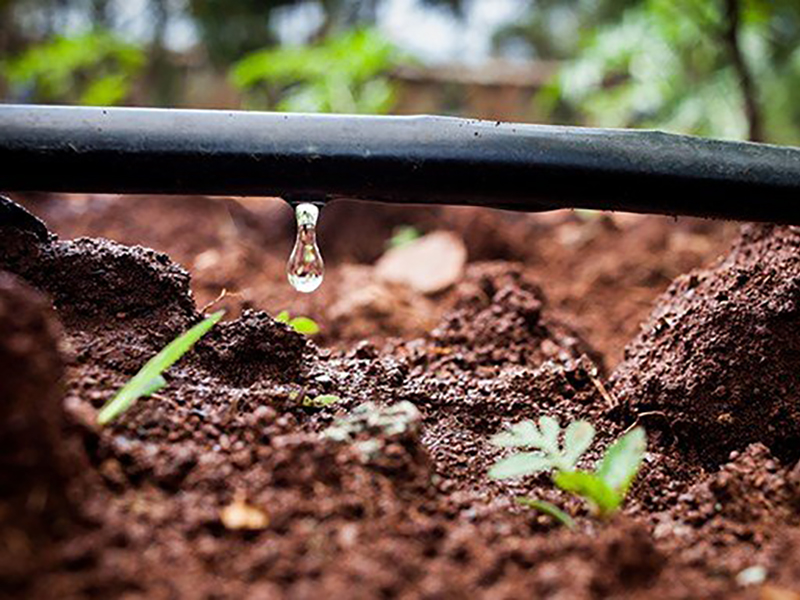As you know, most homes in the Desert Southwest have irrigation systems to keep all of your plants green and healthy throughout the year. Maintaining your irrigation system is not as difficult as you would think. All you need is a nice day, which is plentiful here in the Valley of the Sun. We thought we would outline three areas that arise the most that you can handle all by yourself. Below you will find three helpful hints to repairing your irrigation system.
Solenoid Replacement
If your irrigation system is turned on and a valve does not seem to be working, first locate the valve. It will either be in an inground valve box, or may be located above ground adjacent or in close proximity to the main water line into your home. Once you have located your valves and determined which valve is not working, make sure all wires are properly connected to the solenoid on top of the valve. If they are and the valve is still not working, then you will need to replace the solenoid. The solenoid is a small black cylinder about 2-3 inches in length and has two black wires attached to it. The solenoid’s main job is to operate the gate that is located inside the valve itself. The solenoid is screwed into the top of the valve and can be easily removed by detaching the black wires and unscrewing the cylinder out of the valve. Once this is completed, take your new solenoid and screw it back into the same location that you removed the bad one. Next, reattach the wires using waterproof wire nuts (note that the wires are color coded). These wire nuts are usually blue in color and have gel in them to protect the wires from getting wet. Once that is complete, wrap the wires and connectors with electrical tape to secure the joining of the wires and help keep the elements out.
Supplies needed:
First determine what brand the water valve is by looking on top of the valve. The most popular valves are Orbit, Toro or Rainbird. You will also need wirenuts and electrical tape:
ITEM SKU # PRICE
Orbit Solenoid 7216484 $11.99
Toro Solenoid 7297229 $11.99
Rainbird Solenoid 76952 $11.99
Wirenuts 3106259 $11.99
Electrical Tape 33180 $1.39
Leaky Irrigation Tube Line
If you have water seeping out of your gravel or dirt in your yard, you will need to find the source. First you will need to grab a spade shovel with a pointed edge to dig a hole where the water is leaking. Once you have reached its source you can determine how to repair. Be careful while doing this so you do not make your matters worse by creating more leaks by damaging your existing water line. In most cases your leak is being caused by a crack in your irrigation tubing, which will happen over time due to the movement in the earth or if your hose is above ground, our beautiful warm sunshine will cause it to become brittle. From this point you will need to dig a wide enough hole to be able to repair the tubing.
If the crack is small, you can repair it by cutting the tube with a tube cutter and inserting each end of the tube into a coupler, and hand tightening to get a good fit. That is all there is to it. If your hose is damaged more than a simple hole or crack, you will probably need to replace part of the tubing. Once you have determined the extent of tubing damage, you will need to replace that tubing the same way that is mentioned above, by doing it twice on both ends of your new piece of tubing. Before you cover up the tube with the dirt, test the seal by turning your water back on and check for any leaking water. If you are free of any leaks or drips, you are good to go.
Supplies needed:
ITEM SKU # PRICE
Tubing Cutter 7188816 $19.99
Garden Trowel 7006174 $7.99
50’ ½” Tubing* 7035363 $9.59
Coupler 7107287 $2.99
We suggest buying a 50’ roll of tubing and keep for future use.
Adding More Drippers onto Your Existing System
If you would like to add more plants to your yard near what is already being watered by your drip system, it is very easy to add drippers to your line to water your new plants. The process starts by locating your existing ½” water line. Access the tubing by digging a hole big enough so you can poke a hole in the existing ½” line. Next you will need a ¼” barbed connector that you will insert into the hole you made (pointed end is inserted into the hole), then add a precut ¼” tubing on the other end that will be long enough to reach your new plant. That tubing can either be buried or run along the top of the ground. At this point you would add a 1-4 gph (gallon per hour) dripper based on the requirements of the type of plant you are planting. This simple process can be followed wherever you decide to add a new plant.
If you would like your system to reach further into your yard or reach a plant that is further away, you can easily extend the length of your ½” tubing by adding a coupler and more tubing.
Supplies needed:
ITEM SKU # PRICE
Shovel 70018 $17.99
Garden Trowel 7006174 $7.99
Gloves 7507287 $12.99
50 ft ½” Tubing 7035363 $9.59
½” Coupler 7107287 $2.99
Tubing Cutter 7188816 $19.99
¼” Barbed Connectors 10pk 7488550 $5.59
50 ft ¼” Irrigation Tubing* 7107303 $9.99
1 gal per hour drippers 10pk** 76895 $7.99
¼” Hole Punch 7826233 $2.59
*Irrigation tubing comes in various lengths, colors and prices.
**Irrigation line drippers come in various flow rates and packs.
All of these supplies listed (and more) can be purchased at your local Karsten’s Ace Hardware. If you have any questions or concerns, please contact us or come into the store – we would be more than happy to assist you. As you know “Ace is the Place with the Helpful Hardware Folks!”





